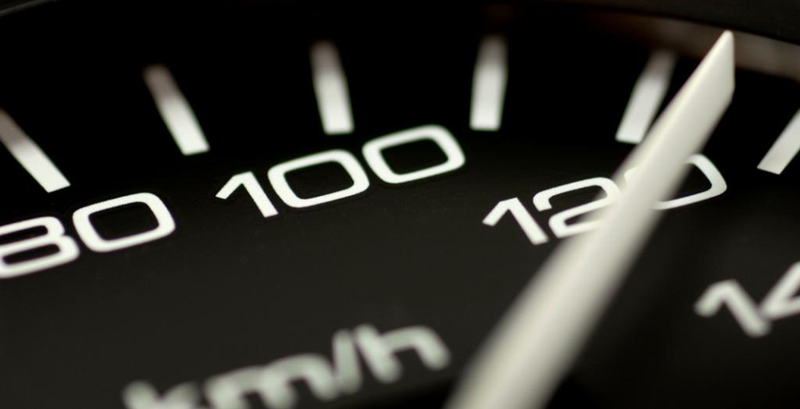Keeping up with 4G: Why the connected car industry is raring to go mainstream

(c)iStock.com/richterfoto
MWC 2016 was something of a watershed for the connected car. While the connected car arrived a few years ago, this year we saw that it is raring to go mainstream. Ford and Nissan had their own stands at the show and Jaguar was showing off the new F-Pace, its ‘most connected car to date’.
This is not a new trend, but notable was the fact that more and more firms who are not directly part of the automotive industry also featured vehicles on their stands. AT&T and Vodafone both sported cars with on-board LTE hotspots, Visa had a demo car which could be used to make payments and Samsung launched ‘Connect Auto’, an LTE dongle which plugs into the ODBII port of your car and can also be used as a 4G hotspot.
As the number of connected vehicles on our streets rapidly increases, there also needs to be an increased focus on assessing reliability issues associated with maintaining network connectivity with moving vehicles. Network operators need to understand how consumer usage of networks is changing, and what the future of connected vehicles will mean for IoT and connected city applications.
Fast and furious at 70 mph
While we are working to better understand mobile network connectivity and how drops in voice and data coverage can be avoided, it is also vital to have a data driven understanding of how consumer behaviour is changing. How consumers expect to be able to use their devices in vehicles has changed dramatically in recent years.
Since the advent of the car phone in the 80s, telephones have been used in cars mainly to make voice calls. Texting is both distracting and generally illegal, as is checking social media. Stand-alone GPS devices operate on a different network and can piggy back on a GSM or GPRS network to get traffic information. However, in the last 5-10 years consumers have begun to use their phones more, even while driving. Music streaming services like Spotify encourage people to use a data connection while driving, something which can still be adequately handled over a 3G connection, however the increased use of sat nav applications like Google Maps on smart devices often need a data connection to load maps which can require a 4G connection in remote locations.
The advent of in-car LTE hotspots further encourages the uptake of data-heavy applications by passengers and drivers alike. For many this will mean passing long car journeys by video streaming through services like Netflix or Amazon Prime and browsing the internet while on a tablet in the back of the car. Cars themselves now also offer the driver all sorts of rich media options including Siri and Google Now voice searches while driving. The new age of connected cars will require network operators to provide reliable high-speed data networks certainly along motorways but also any road where passengers have enough time to connect. However, given that LTE or 4G signal is still far from 100% ubiquitous in urban areas alone, it may be a while before UK consumers can expect to be able to access the full potential of data connections in their cars.
Who will translate for cars and traffic signals?
Looking to the future, another MWC trend pops up; the proliferation of IoT and the various network protocols. An obvious starting point for IoT would be connecting cars to the various pieces of road infrastructure and street furniture. If traffic lights could communicate with cars then urban congestion could be managed as a city wide single system and dealt with accordingly. The exchange of sensory, location and traffic data between transportation centres and cars is already beginning to happen with apps like Waze and Google maps. The question is what kind of wireless network will roadside infrastructure use? Some of the data transmitted such as GPS location does not require a full LTE connection, and could possibly be handled by one of the many upcoming IoT protocols – NB-IoT, LoRa or LTE-M. However as was demonstrated recently at MWC many cars will already have LTE connections, thus the government, transport authorities and network operators will have to decide what their IoT networks will look like and how it will integrate with the existing LTE/4G infrastructure.
As more cars come online we could see that network operators find LTE-M to be the best choice because existing LTE masts are able to support the protocol with a software update. Battery life considerations are less important as road infrastructure generally has a mains supply. If regulatory bodies decide to champion the connected car as one of the first major IoT applications then LTE-M could become one of the first major IoT network protocols.
The connected car is changing consumer demands on mobile networks and bringing a new range of issues to life. With the IoT world beginning to take shape, the connected car provides a bridge between the worlds of consumer and public service technologies, which could become a powerful catalyst for certain IoT protocols to become embedded in our cities. Consumer demands are forcing the car to evolve, and networks are now adapting existing and future plans to accommodate it.

Leave a comment
Alternatively
This will only be used to quickly provide signup information and will not allow us to post to your account or appear on your timeline.